
Dough, the monitor brand formerly known as Eve, has experienced a bit of a redemption arc over the course of the last year. Despite a run of controversy that saw it fail to deliver products to backers and a period of poor communication for those looking to be refunded, it proceeded to right its wrongs, get stock into customers' hands and, in the shape of its Dough Spectrum One range, deliver some of the finest 4K gaming-oriented monitors on the market.
It entered 2024 with the promise of even more sumptuous displays focussed around premium OLED panel tech, with the Dough Spectrum Black line. Set to launch in 27-inch / 1440p and 32-inch / 4K configurations, it’s the smaller of the two that we’re looking at today.
And while the monitor enjoys many of the high-end features that made the Spectrum One line a joy, some drawbacks in the way OLED is deployed here — along with a steeper-than-is-competitive price tag — make it harder to recommend than its stablemates, and not among the ranks of the best monitors for Mac.

Dough Spectrum Black 27-inch 1440p OLED monitor: Price and availability
The Dough Spectrum Black 27-inch 1440p OLED monitor can be ordered now. A version with the Gorilla Glass glossy finish that we’ve loved from Dough in the past will set you back $1,099, while the matte finish costs $899. An optional stand is an additional $99, but the monitors support standard VESA mounts if you’ve already got an arm on your desk.
OLED or not, this is expensive for a 1440p screen, even if you’re looking at the $899 matte option. As you’ll see as we go through the review here, the cheaper 4K Dough option will likely make more sense for many.
Dough Spectrum Black 27-inch 1440p OLED monitor: Design and connectivity
The overall look and feature set of the Dough Spectrum Black 27-inch is its strongest point. As with earlier Dough monitors, it strips back any of the flashy ‘gamer’ aesthetic that you might find on similarly-spec’d monitors, and keeps it simple with a black-and-metal-only design. Thin borders and an even thinner panel make for a svelte screen and, if you opt for the optional stand, it keeps things simple too with a brushed-aluminium finish and a smart cable guiding system. It’s a very nice stand actually – smoothly rising, rotating and tilting, with one of the easiest-to-guide snap-on mounts of any stand I’ve tried.
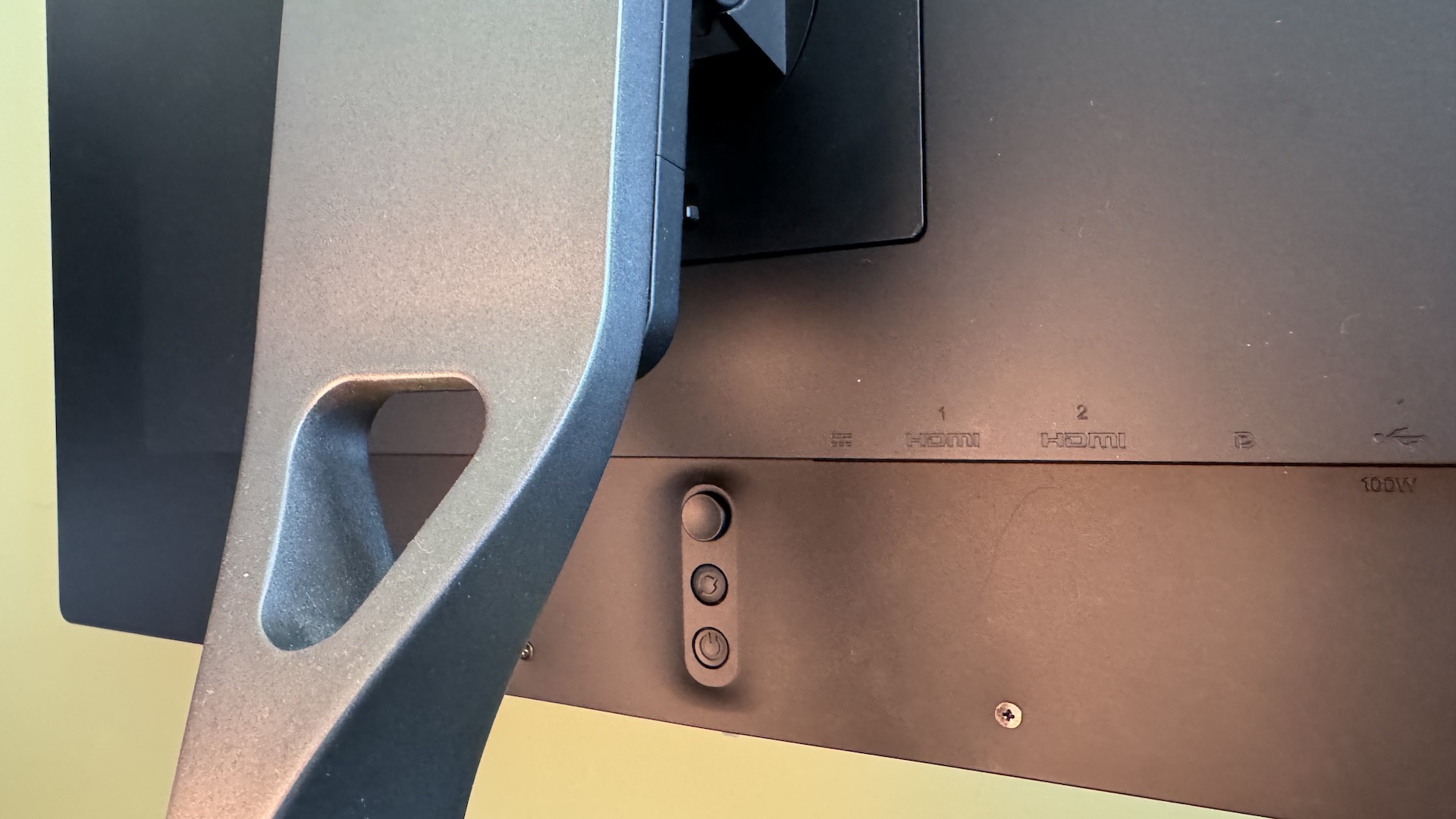

It’s a similarly excellent array of input ports on offer. The Dough Spectrum Black 27-inch serves up 2x HDMI 2.1a ports, a DisplayPort 1.4, 1x USB Type-C DisplayPort, and 1x USB Type-C upstream connection. Going in the other direction, it’s also supporting output for 2x USB Type-C 3.1 Gen2, 2x USB Type-A 3.1 Gen2, and 3.5mm audio. Factor in a KVM switch for controlling a keyboard and mouse across multiple devices connected to the monitor, and 100W power delivery over USB-C for keeping your MacBook charged, and it’s ready to be the focal point for your whole desk.
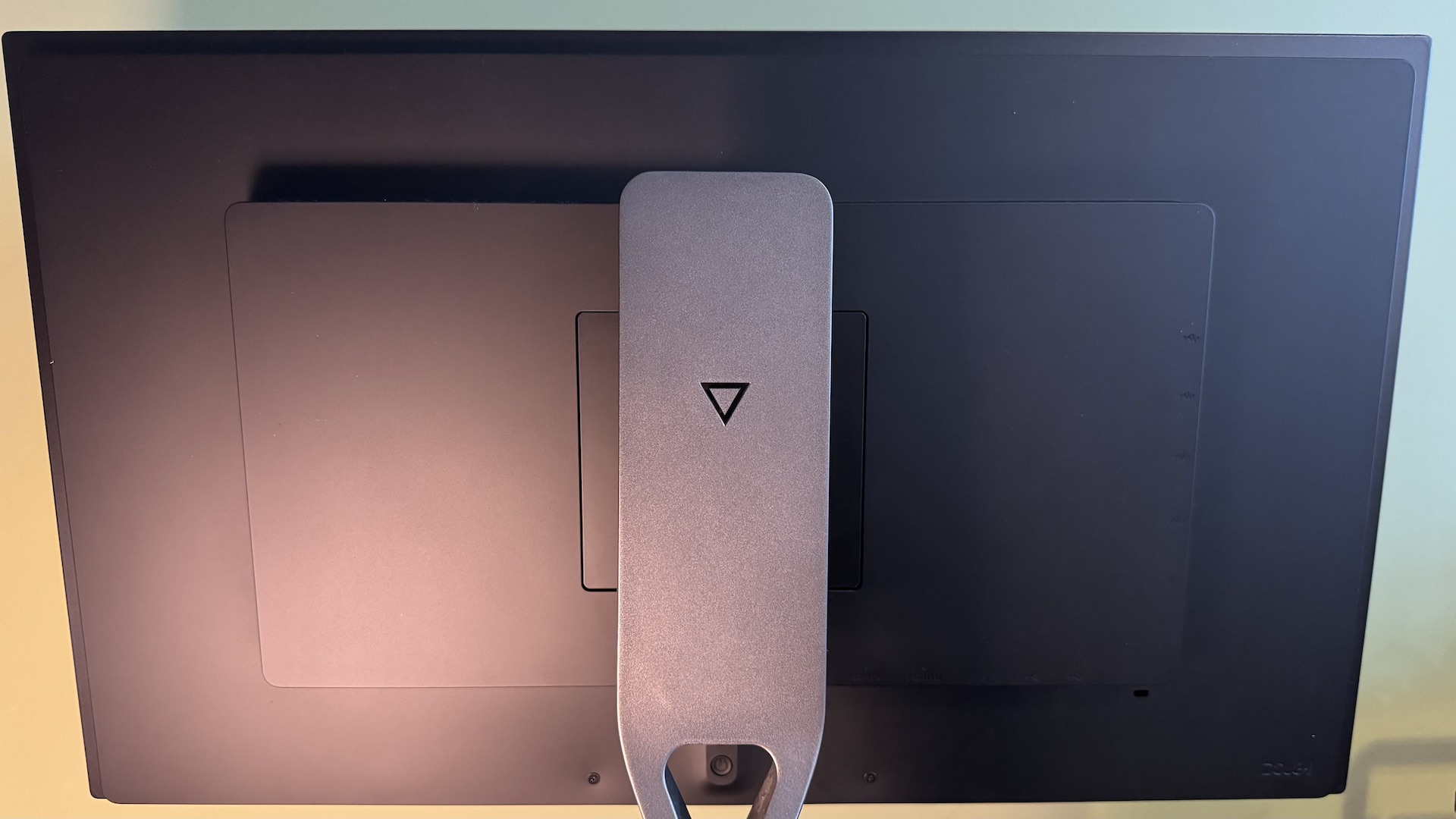
From a design perspective, the only drawback is the rear-mounted control joystick, used to navigate the OSD. Sitting just above the KVM and power buttons, joysticks on monitors are a chore at the best of times, but the nature of OLED monitor settings means you’re likely going to be diving into the OSD more often than you usually would. The inclusion of a remote here would go a long way.
Dough Spectrum Black 27-inch 1440p OLED monitor: Performance
Let’s start with what the monitor gets right. Off the bat, the very nature of OLED means that response time and latency are close to zero (0.03 milliseconds grey-to-grey). With a refresh rate of up to 240Hz, black frame insertion, and both Nvidia G-Sync and FreeSynch Premium Pro VRR methods supported, it’s responsive enough to cater to even pro-level gamers.
But the choice in the panel itself is where the problems start to rear their heads. The Dough Spectrum Black 27-inch OLED makes use of a first-gen LG OLED. That makes it quite a dim display by today’s standards, reaching a typical 150 cd/m² brightness, and hitting a peak of 450 cd/m². That pushes up to 1,000 cd/m² of peak luminance when you’re running HDR games and content, but only across a tiny percentage of the screen. If it’s not a scene of stars across an ink-black sky, it’s going to look surprisingly dull. Color and contrast are rich and vivid, but if you’re looking for an eye-popping HDR experience, this isn’t the one.

That could still be passable during day-to-day office usage where blinding brightness would actually be a bit off-putting. But the clarity of this OLED panel at 1440p becomes an issue too. LG’s panel uses what’s called a W-OLED sub-pixel structure — adding a white subpixel to the standard red, green, and blue that makes up the usual RGB array. This isn’t a problem in, say, OLED TVs where text isn’t under near-constant close-up scrutiny, but when used in a desktop operating system it wreaks havoc on fonts, giving a ghostly fringe to the edge of text. This was apparent when using the monitor with both macOS and Windows and is exacerbated by the lower-pixel density of a 1440p display, whereas a 4K panel using the same array can hide it a little better by the sheer force of pixel numbers behind it.
To give it its fair due, the screen is primarily aimed at gamers, and this issue would rarely come into play when fragging bad dudes or hitting up your favorite console platformers over that HDMI 2.1 connection. But part of the appeal of Dough monitors in the past for me has been their ability to wear two hats at once — reserved enough and with sensible features to make them workplace-friendly while having enough gaming grunt to pull out all the stops for an intense play session. That’s not the case with this model.

It’s an issue further exacerbated by the inherent quirks of OLED. Burn-in remains an issue with OLED, and Dough sensibly includes lots of options to mitigate this. But they too become annoyances. Regular pixel shifting plays with your eyes, but the most offensive to me was the aggressive dimming used to protect the display. Moving a light and bright browser window around for instance would cause the brightness of different areas of the display to fluctuate noticeably to accommodate it, and the only way to get around this is to turn on the most aggressive brightness-throttling controls in the OSD.

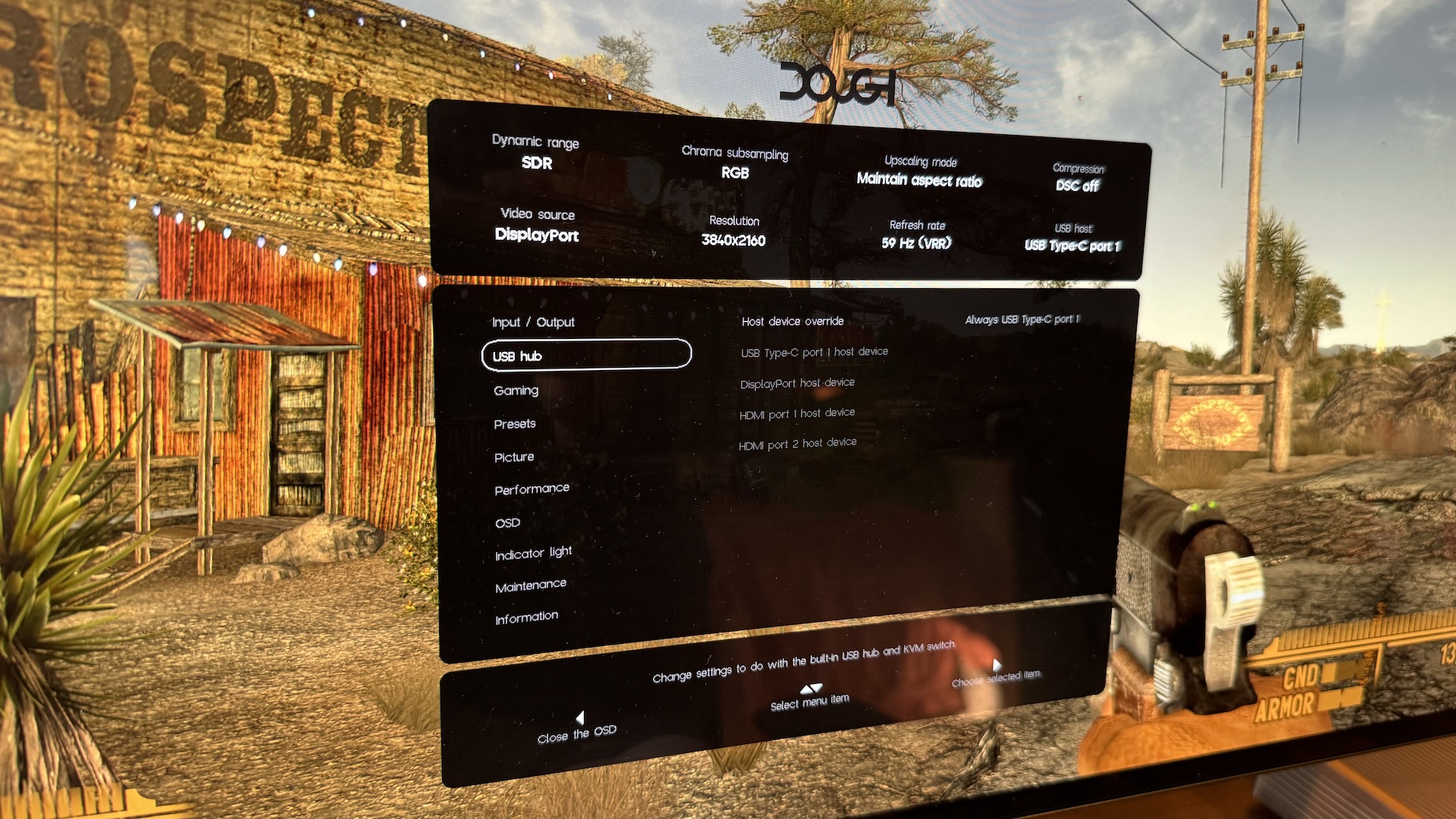
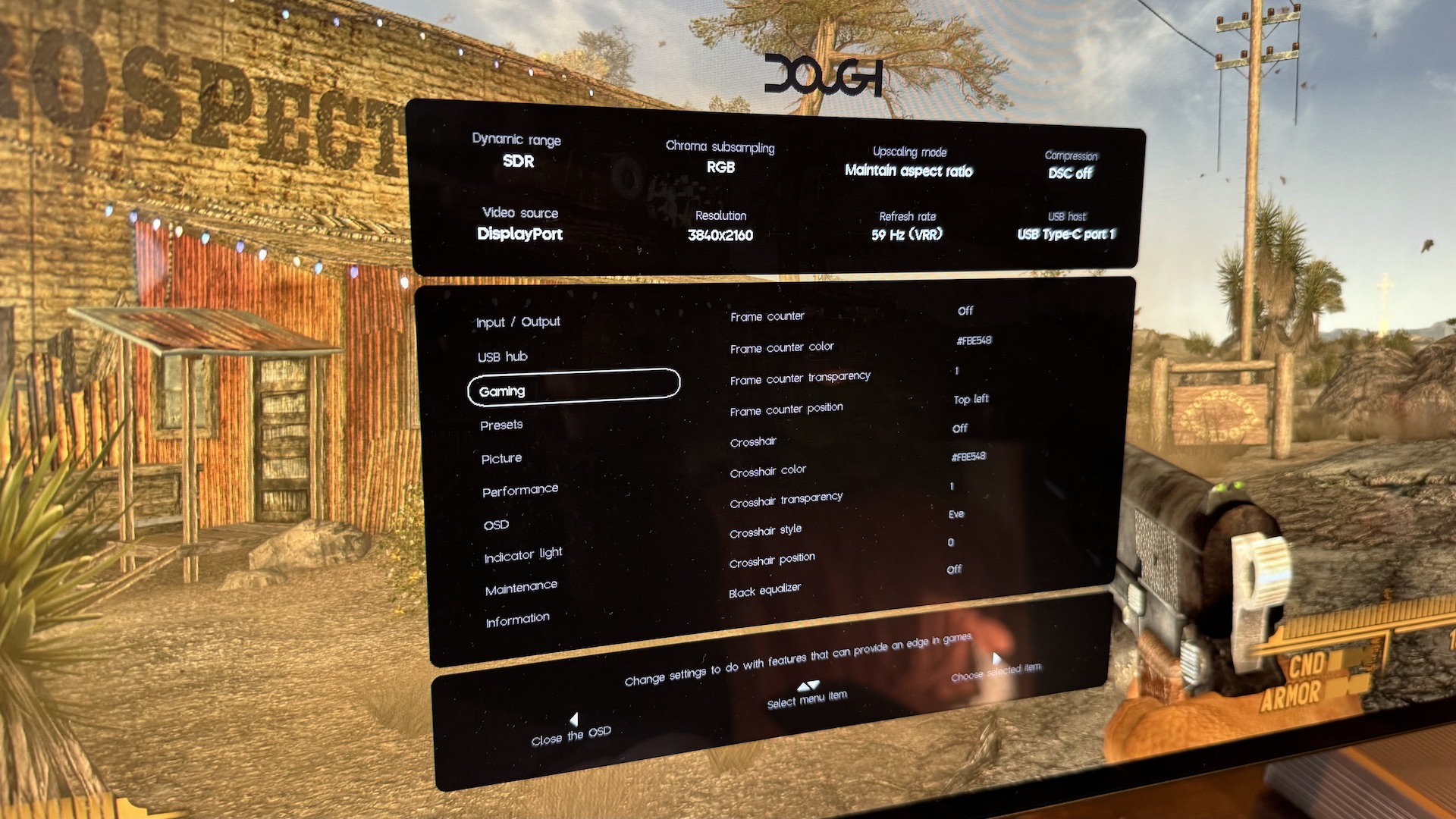
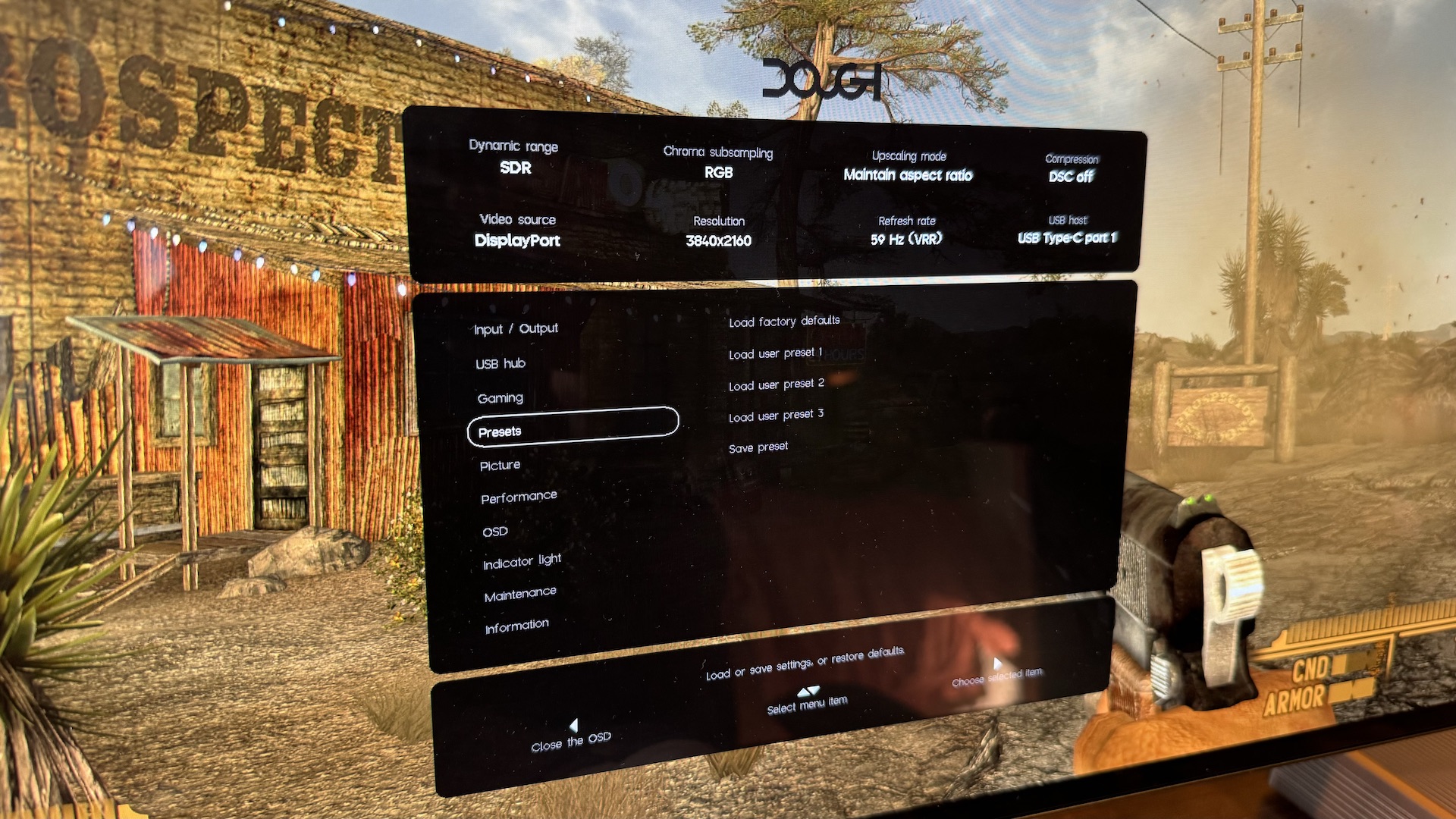


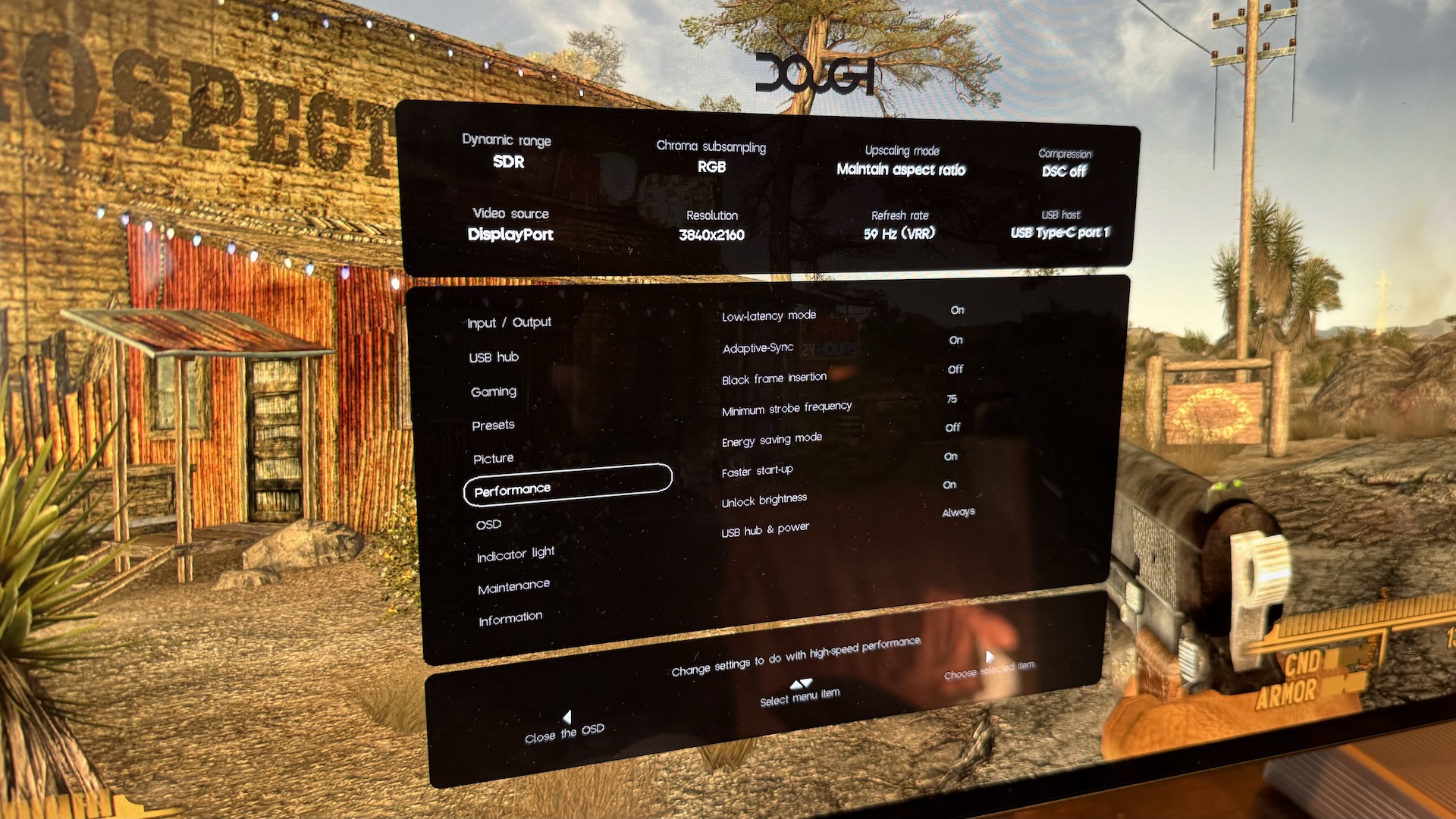
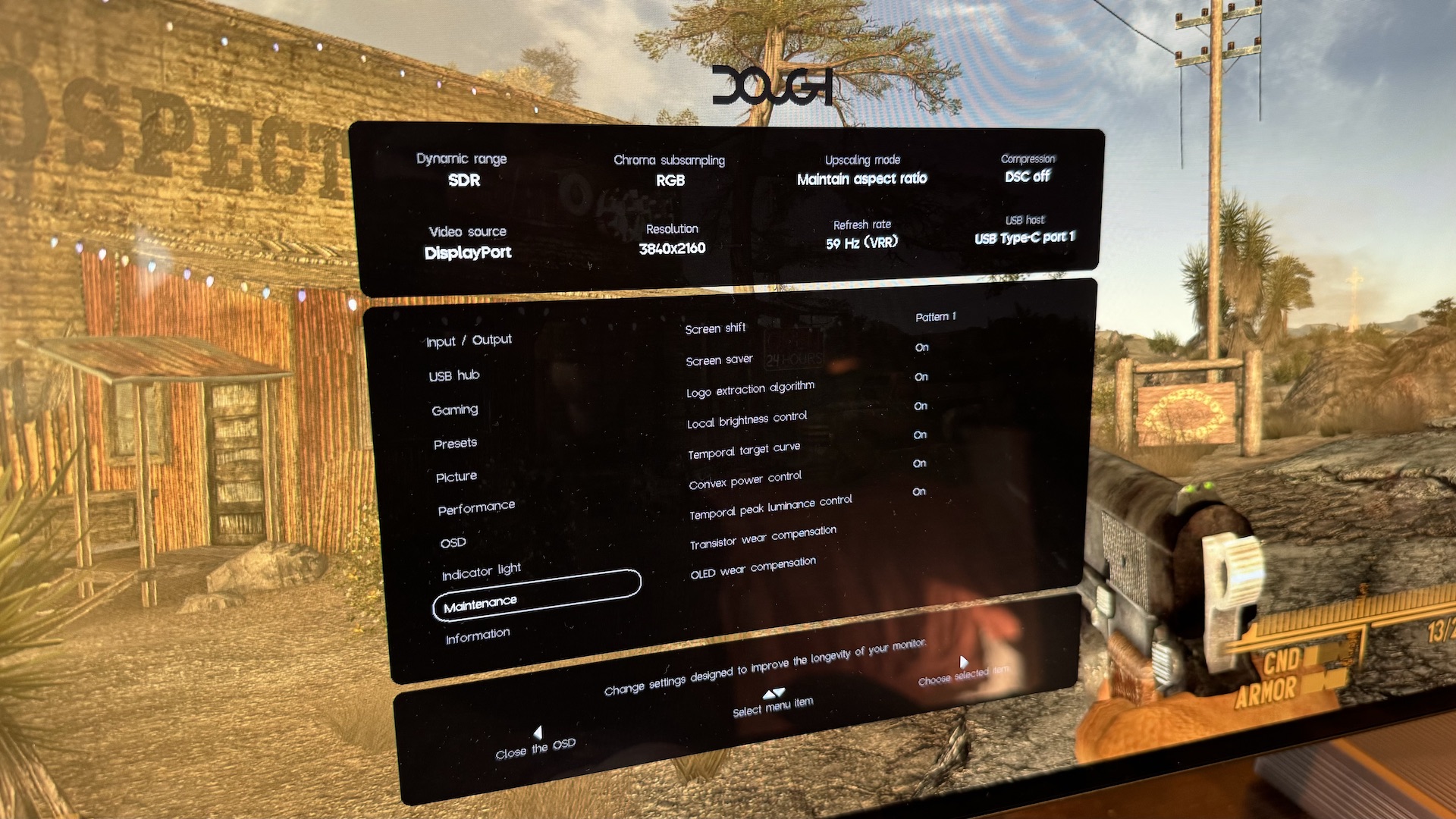
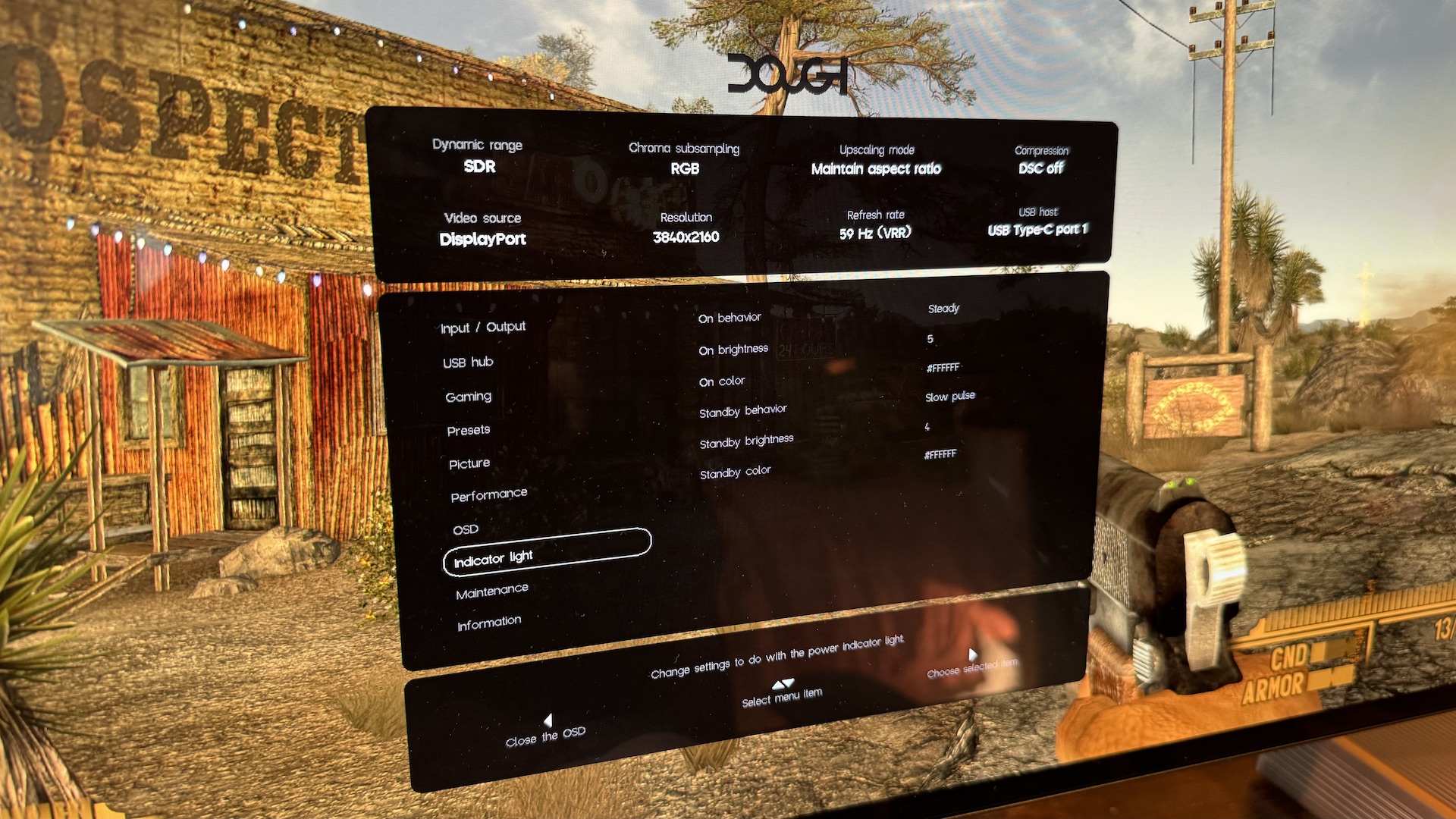
Dough, in many ways, is taking the right approach here — the last thing you want is your Safari toolbar seared into your panel for all eternity. But then you’re left micro-managing these protective settings every time you want to do something leisurely like play a game on the screen, which then leaves you fumbling around the back for that awkward control stick more than you’d usually do with an LCD screen. You start to feel like the concessions outweigh the benefits.
Dough Spectrum Black 27-inch 1440p OLED monitor: Competition

If OLED is your one-and-only monitor wish, and you’re the sort of gaming-focused computer user that these sorts of monitors are primarily aimed at, have a think about something like the Philips Envia 42M2N8900/01. At 42 inches and with a 4K resolution, you’re getting a lot more screen for not very much more money, with the monitor usually on sale around the $1,400 / £1,400. It’s not quite as good in terms of refresh rate, maxing out at a (slightly odd) 138Hz — but that’s still silky smooth enough for the frames you’re likely going to be able to push at that screen size. Plus, you’ve got way more screen to immerse yourself in.
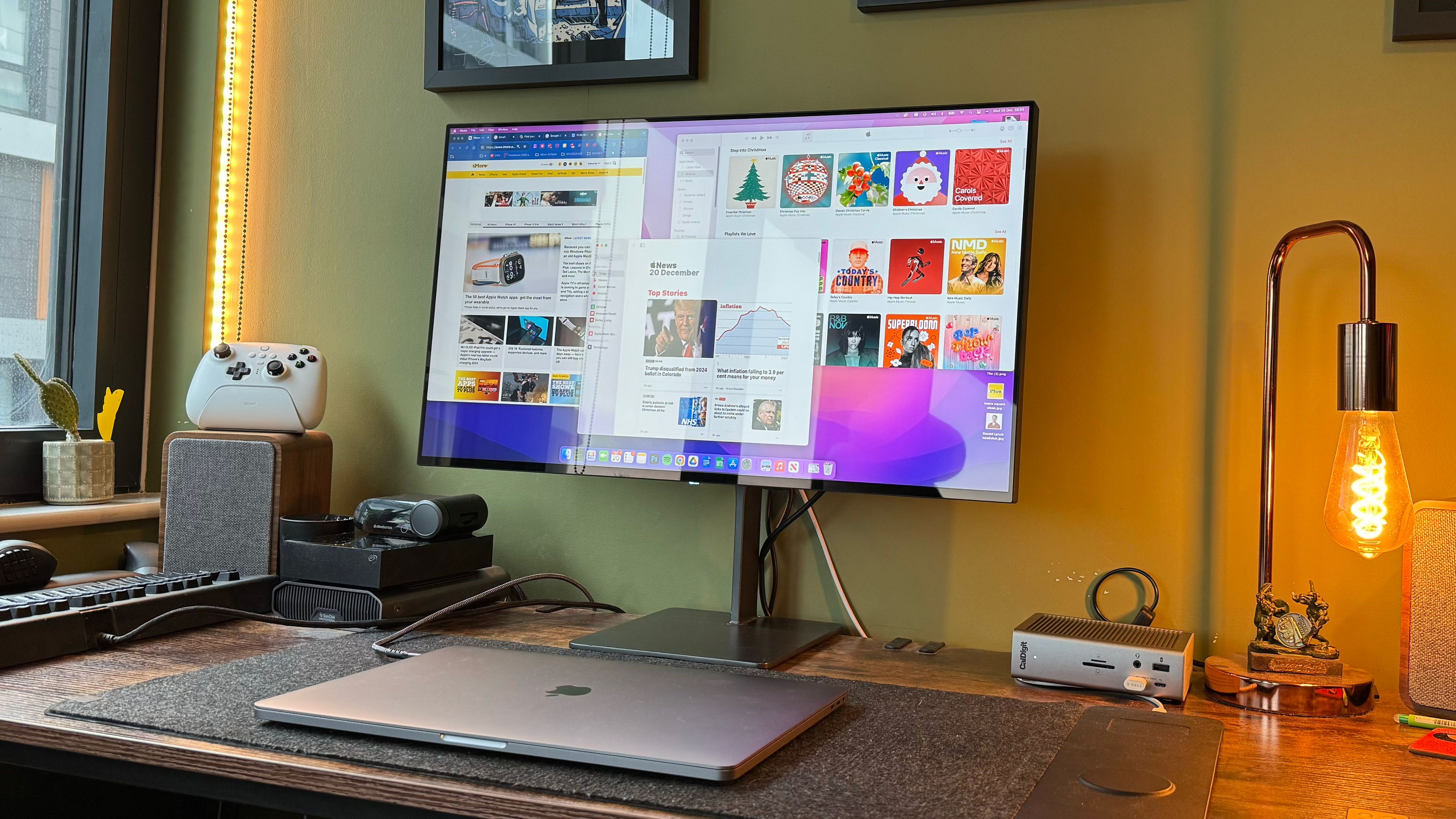
Personally though, I’d just go back to Dough’s own LCD IPS Spectrum One range. Its 4K / 144Hz monitors are superb and suffer from none of the OLED-specific problems mentioned above. They’re priced at $599.99 for the matte finish, $699.99 for glossy, and $799.99 for the glossy Gorilla Glass version. I think they’re genuinely great, and that matte one in particular is a great deal at that price.
Dough Spectrum Black 27-inch 1440p OLED monitor: Should you buy it?
Buy the Dough Spectrum Black 27-inch 1440p OLED monitor if...
Having OLED’s rich contrast and inky blacks is important to you
OLED is still the premier display tech if you want the darkest blacks and brightest contrast highlights.
You game more on your computer than you do work
Many of the biggest drawbacks of the display disappear if you're just using it purely for gaming.
The Dough style appeals to you, no matter the price
I'm still in love with the reserved aesthetic of Dough's display, keeping things simple in a world of garish gaming monitors.
Don’t buy the Dough Spectrum Black 27-inch 1440p OLED monitor if…
You need a monitor as adept at work as it is for gaming
A 1440p first-gen OLED panel from LG just isn't a great fit for day-to-day productivity.
You want value for money
You can get similarly-spec'd — if not better — screens at a better price point than is offered here.
You don’t want to micro-manage screen settings
To make the screen comfortable to use when switching between gaming and productivity sessions, you're going to need to get used to diving into its settings menu regularly.
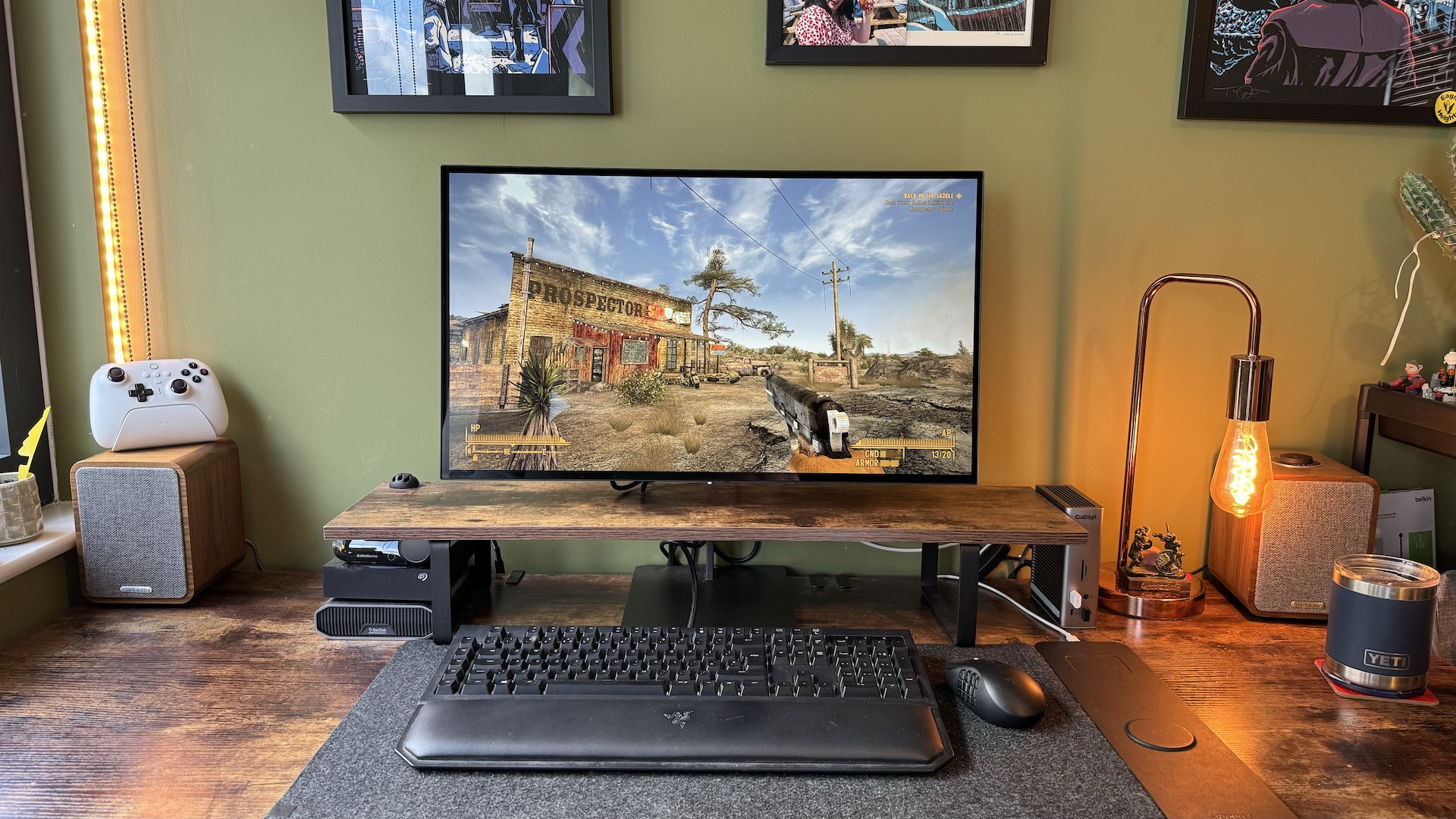
Verdict
Dough still gets a lot right with the Dough Spectrum Black. I’m still a big fan of its laid-back external design and its port selection, for starters. Though the stand is expensive, its sold-separately nature is good for those with an established desk-and-monitor-arm setup, too. And in action, especially when gaming, it’s not half bad, with a high refresh rate and deep blacks.
But there are issues here. It’s out of step with the pricing of comparable monitors. Font edging is poor. Peak brightness isn’t great. And the amount of concessions made to prevent dreaded OLED burn-in make it an awkward monitor for daily-driver workloads — which, as a Mac-focussed site, is always the primary use case for us.
Gamers will still find lots to enjoy then once they acclimatise to the quirks of living with an OLED monitor. But it’s not a great pairing for your Mac.
As for the 32-inch model, we’ve yet to get our hands on that. But there’s lots to suggest it could iron out many of the creases the 27-inch version has to deal with, particularly around its pixel makeup and associated clarity. Here’s hoping Dough delivers, and that it can restart its recent run of great gear.
Bottom line: A great-looking monitor held back by a high-price tag and the fiddly nature of a 1440p OLED display.







